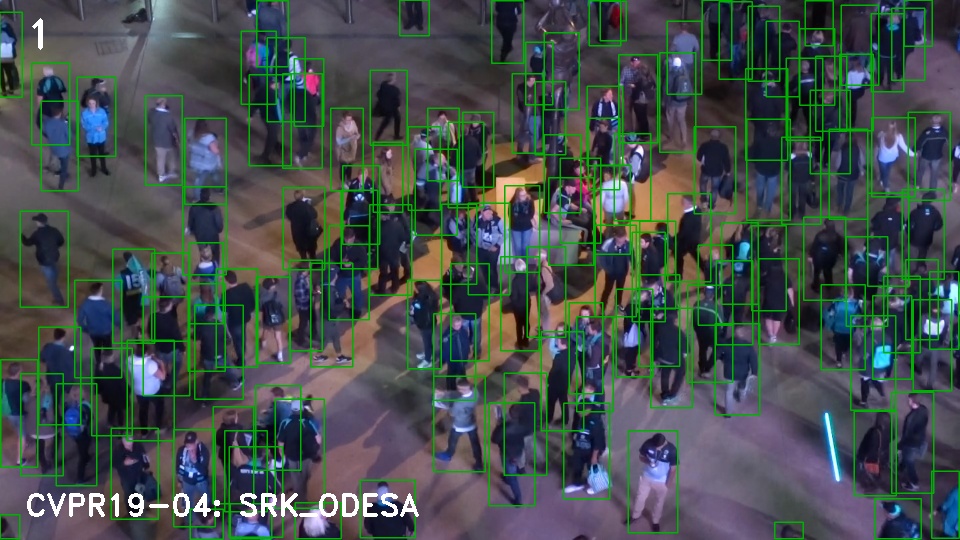SRK_ODESA: SRK_ODESA

Video not available.
Rendering of new sequences is currently deactivated due to heavy load.
Rendering of new sequences is currently deactivated due to heavy load.
Rendering of new sequences is currently deactivated due to heavy load.
Benchmark:
Short name:
SRK_ODESA
Description:
Team:
Dmytro Mykheievskyi, Dmytro Borysenko and Viktor Porokhonskyy
Samsung Research&Development Institute Ukraine (SRK)
This solution is merely an adaptation of Faster R-CNN to CVPR'19 Tracking dataset.
Detector Design:
Faster R-CNN with ResNet-101 backbone was taken the starting point. On top of that FPN and 3-stage refining Cascade were added. Anchor settings: two aspect ratios and five scales were configured.
Trainset:
CVPR'19 and MOT16 datasets were included into the trainset. Only pedestrian instances considered by the evaluator (i.e. consider flag is being equal to 1) and visibility above 0.25 were employed during the training stage.
Image preprocessing:
The input images were resized such that the shorter side was set to 1080 pixels. The initial image aspect ratio was preserved.
Training protocol:
Synchronized SGD was employed to train the model on 8 GPUs (NVidia P100). Each mini-batch included single image per GPU. The weight decay and momentum values were set to 0.001 and 0.9, respectively. Because considered scenes were of high density (246 pedestrian per frame), RoIs and NMS top-k counts per image were increased during training and testing stages.
Reference:
D. Borysenko, D. Mykheievskyi, V. Porokhonskyy. ODESA: Object Descriptor that is Smooth Appearance-wise for object tracking tasks. In (to be submitted to ECCV'20), .
Last submitted:
June 03, 2019 (5 years ago)
Published:
June 12, 2019 at 12:47:35 CET
Submissions:
1
Project page / code:
n/a
Open source:
No
Hardware:
CPU: 3GHz, 1 core; GPU: 1.5Ghz
Runtime:
3.0 Hz
Benchmark performance:
| Sequence | AP | MODA | MODP | FAF | TP | FP | FN | Rcll | Prcn | F1 |
| CVPR 2019 Detection Challenge | 0.81 | 75.0 | 79.4 | 12.3 | 340,612 | 55,251 | 39,930 | 89.5 | 86.0 | 87.7 |
Detailed performance:
Raw data:

